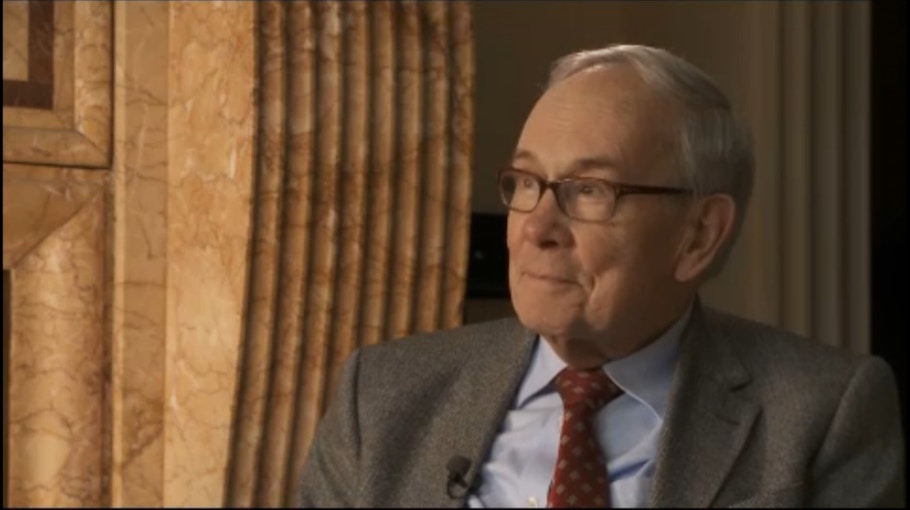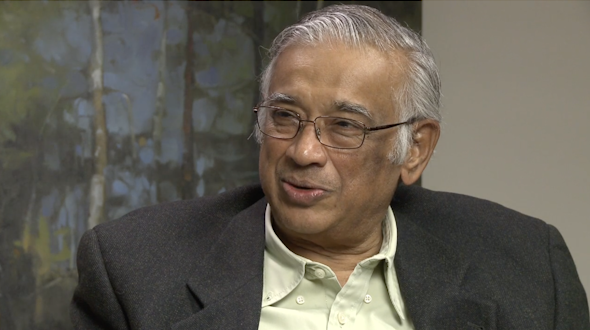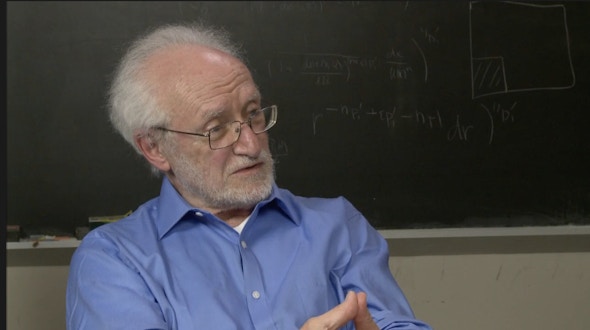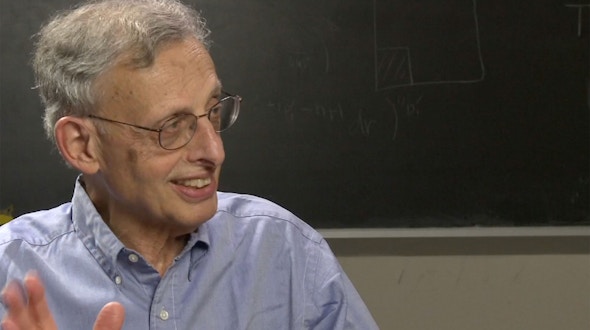Friedrich Hirzebruch
- World War II (10:03)
- Becoming a mathematician (7:19)
- Teachers at Münster (2:49)
- Going to Geometry and Heinz Hopf (8:52)
- How mathematics changed in Germany after World War II (3:17)
- Two advisors, first two papers (7:18)
- First job at Erlangen (5:09)
- Princeton 1952 (4:35)
- Working with Kodaira and Spencer (2:39)
- About Kodaira, Spener and Borel (5:45)
- The signature theorem (5:18)
- Riemann-Roch theorem (6:43)
- Raoul Bott (5:20)
- Topological methods (3:33)
- ICM 1954 Amsterdam (2:43)
- The job at Bonn (3:33)
- Bonn and the first Arbeitstagung (6:12)
- Algebraic Topology Symposium Mexico 1956 (1:29)
- On joint papers (3:22)
- Contacts with Chern (3:48)
- The invention of K theory (8:47)
- Arbeitstagung highlights through 1965 (6:17)
- Mathematics at Bonn (2:59)
- Max Planck Institute (11:08)
- Hirzbruchs 1995 retirement (2:44)
- Surface singularities (6:03)
- Working with students (3:36)
- Unification of German mathematics societies (6:29)
- Contacts with Israel (5:28)
- Contacts with foreign mathematics (6:35)
- Closest math friends (5:21)
- What is the use of mathematics? (5:01)
- New fields of interest in mathematics (2:15)
- Oberwolfach (11:24)
At Bonn University in 1955, members of the faculty were arguing about whether to offer a full professorship to a young mathematician named Hirzebruch. The mathematicians pointed to Hirzebruch’s astounding extension of the Riemann—Roch theorem. His recent symposium at the International Congress of Mathematicians in Amsterdam had so impressed Francesco Severi, elder statesman of the Italian school of algebraic geometry, that Severi had declared himself already in paradise. Other faculty members grumbled: little precedent existed for offering a full professorship to a man barely over 30. Youth, another retorted, was a weakness guaranteed to wear off with time. Hirzebruch got the job, a decision that proved critical not only for algebraic geometry and algebraic topology but for Bonn and for the shattered edifice of German mathematics as well.
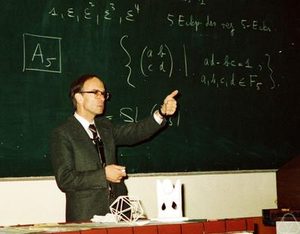
Friedrich Ernst Peter Hirzebruch was clearly cut from mathematical cloth. As a boy, he talked mathematics with his father, a math teacher and headmaster at the local secondary school in their home town of Hamm, Westphalia. With his father’s guidance, he proved the irrationality of the square root of 2 when he was 9 years old. As a teenager, Hirzebruch was drafted to the Deutsches Jungvolk (German Youth), where he spent long hours in anti-aircraft positions, gazing at the skies and doing mathematics in his head. Hirzebruch was drafted into the German army just as the Allies were closing in and was saved from the last hopeless fighting largely by luck. Captured by Allied forces, he continued his mathematical explorations in a prison camp, writing on sheets of toilet paper from his emergency rations.
Hirzebruch was released in July of 1945 and began his mathematical studies at the University of Münster that winter. Münster and its university lay in ruins. Mathematics students got the use of a lecture hall only once every three weeks. Classroom availability quickly improved, but German mathematics was not so easily restored. Göttingen had been the best place in the world to study mathematics until the “cleansing” of Jews and others repelled by Nazi policy transplanted mathematical leadership to the United States.
Nevertheless, Hirzebruch’s first three main teachers were German. Under Heinrich Behnke, Hirzebruch studied the geometric function theory of several complex variables, which became the foundation of his own work. Behnke’s doctoral student Karl Stein soon joined the Münster faculty as Dozent. Stein, who also hailed from Hamm, had learned his love of mathematics from Hirzebruch’s father. He returned the favor during long hours of mathematical discussions on the train back to their hometown. It was Stein who told Hirzebruch that complex spaces in dimension 2 could be topologically non-trivial near a singularity, an idea the young man would explore and resolve in his thesis.
Hirzebruch’s third teacher was Heinz Hopf, whose work helped establish algebraic topology as a field worthy of inquiry. Hopf had moved to Switzerland shortly before the Nazi rise to power, and when Hirzebruch signed up for a summer program that sent students to work on Swiss farms, Behnke secured an invitation for his student to the Hopfs’ home near Zürich. Hirzebruch spent a week there, eating with the older couple and talking mathematics with Hopf. “He and his wife treated me as their son,” he said later.
Hirzebruch soon returned to Switzerland, where he spent much of the next two years. “I learnt a lot from Heinz Hopf about algebraic topology and complex manifolds,” he recalled, “and returned to Münster full of new ideas, which I told Heinrich Behnke and Karl Stein.” He came back with most of his thesis complete: a resolution of the singularities of what were just becoming known (thanks to work by Behnke, Stein, and Henri Cartan) as two-dimensional complex spaces. He also discovered what later became known as Hirzebruch surfaces. The thesis was quickly accepted and later published in theMathematische Annalen, then Germany’s most prestigious journal.
“For a German student who had lived through the war,” Hirzebruch later remembered, “Switzerland was a paradise academically and otherwise. I enjoyed the international atmosphere with visitors from many countries and the excellent courses and seminars offered.” He soon ventured farther afield, accepting an invitation to spend two years doing mathematical research as a member of the Institute of Advanced Studies in Princeton. On Monday, 18 August, 1952, after a nine-day crossing, Hirzebruch stepped off the Ryndam of the Holland America Line in Hoboken, New Jersey, where he was met by Newton Hawley, who had recently published a paper on compact complex manifolds in the Annals, and D. C. Spencer, who had just moved to Princeton from Stanford and was turning his attention to several complex variables and complex manifolds. Work began the following morning.
Sidebar: The Hirzebruch Touch
Administrators looking for maximum quality with minimum effort might draw inspiration from Hirzebruch’s organization of the Arbeitstagung. He attributes the mechanism he developed to “laziness and search for efficiency.”
Klaus Peters, later mathematics publisher at Springer Verlag and AK Peters, attended what was informally called “the Hirzebruch Festival”:
“The meeting started always with Hirzebruch standing up and saying, ‘So, what are we going to do this week? The first speaker will be here in half an hour. Who wants to give the next talk?’ Nobody said anything. ‘Okay, suggestions.’
‘I want Serre to talk about the work of so-and-so.’
Serre: ‘I don’t know much about that.’
Hirzebruch: ‘Oh, you know about it. Do it tomorrow morning, you can read up overnight.’
Serre: ‘Okay, I’ll do it tomorrow morning.’ And Hirzebruch wrote on the blackboard: ‘First talk tomorrow ― Serre.’
Somebody volunteered and said, ‘I want to talk about such-and-such.’
‘Fine.’ So the schedule for the next two days would get filled.
Then, just as Hirzebruch’s part was over, Atiyah walked in from the airport and gave the first talk. Meanwhile, Hirzebruch’s secretary typed out the program, mimeographed it, and after Atiyah’s talk, Hirzebruch distributed a printed program for the next two days. Then they had another little session for the next two days. The whole thing was totally informal but high level.”
“Hirzebruch organized it all entirely according to his tastes,” says Atiyah. “He managed to steer it in such a way that the program that came out at the end of the discussion looked as though it was entirely impromptu and democratic, but in fact it was carefully stage-managed by Hirzebruch. It was typical of his management: he did it by sheer charm, skill, good taste. People didn’t realize until later on that it was all very structured and organized.”
Hirzebruch and his new wife, Ingeborg Spitzley, would live for most of the next two years in an attic apartment in the Hawleys’ house. Working with Spencer, Armand Borel, and Kunihiko Kodaira, and through correspondence with J. P. Serre and René Thom, Hirzebruch learned mathematical methods then unknown in Germany: coherent analytic sheaves, vector bundles, characteristic classes and Thom’s cobordism. By the time the two years were over, Hirzebruch had achieved his first major result: formulating and proving the Riemann—Roch theorem for complex algebraic varieties of all dimensions, work that also included the Hirzebruch signature theorem.
The Riemann—Roch—Hirzebruch theorem inaugurated a new era in algebraic geometry, leading to innumerable future results, including Grothendieck’s further generalization from a single variety to maps of varieties and also the Atiyah—Singer index theorem. Algebraic geometry was undergoing one of the field’s periodic revolutions. Cartan and Serre had developed sheaf theory for complex manifolds, work that was further advanced by Kodaira and Spencer. The Riemann—Roch theorem is concerned with expressing the (topological) Euler characteristic of holomorphic bundles in terms of analytic data, allowing the calculation of analytic invariants from the topology. Riemann—Roch was clearly a statement of a general principle regarding Riemann surfaces, but until then no one knew what the general principle might look like. Hirzebruch’s unique background allowed him to see the problem through the lens of recent geometric developments, and thus to discern the general form. His work made him famous overnight.
Bonn University’s newest full professor was therefore a man of formidable talents. His work had transformed his field. His lectures were models of pellucid clarity, building up to a climax that was “like a conjurer pulling a rabbit out of a hat,” Sir Michael Atiyah says, “though rabbits don’t come out of hats unless they’re put there in the first place.” But the young professor would contribute in ways the Bonn faculty may not yet have fully grasped. “He was the right man at the right time,” Atiyah says. German mathematics, “because of the war, had to start all over again. There weren’t that many chairs; there weren’t that many jobs. Everything was very traditional, stuffy, conservative. Hirzebruch had to fight quite hard to get ideas through. He was very young, the vanguard of the new generation. He came from Princeton, which is a center of international activity, full of brilliant new ideas and new activity. He knew what he wanted; he was able to argue his case; he was very clear about what should be done. So he was really unstoppable.”
Inspired by the Princeton model, Hirzebruch wasted no time in advancing the idea of international cooperation when he arrived to take up his Bonn position. If mathematicians of international caliber were not yet commonly positioned in Germany, he would bring them there as visitors. His first triumph was the Arbeitstagung, or annual “working meeting.” The first Arbeitstagung, in mid-July, 1957, brought together a small group of high caliber and international reach: Hirzebruch and Hans Grauert from Germany, a young Michael Atiyah from England, Nicolaas Kuiper of Holland, Jacques Tits from Belgium, and Alexander Grothendieck from France, who devoted three long lectures to a new proof and generalization of the Riemann—Roch—Hirzebruch theorem to algebraic varieties.
By the third year’s workshop, Hirzebruch had instituted the organizational framework for which the Arbeitstagung would become famous. He wanted the best people and most cutting-edge mathematics; he also wanted to minimize administrative fussing. Few people were invited: the Arbeitstagung was simply announced, and anybody could come. The first speaker (generally Atiyah) was set in advance, but subsequent speakers were selected by “guided democracy” ― that is, chosen on the spot through a discussion led by Hirzebruch.
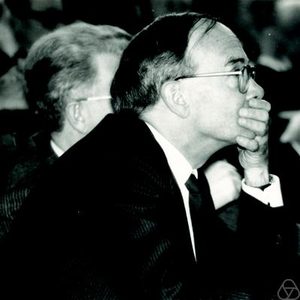
Hirzebruch would host thirty Arbeitstagungen in all, seeding a remarkable fusion of analysis and topology, plus important work in many other fields. “The work of Michael Atiyah presented in Bonn was not the only work discussed at these meetings that won a Fields Medal,” wrote Hirzebruch’s student Egbert Brieskorn: “Half of the medalists who won the award between 1950 and 1990 gave lectures at the meetings of the first series of the Arbeitstagung.”
But Hirzebruch was not satisfied with the Arbeitstagung’s success. His early years at the IAS in Princeton had taught him the value of an independent research institute with international scholars in residence year-round. In 1982, after more than twenty years of effort, Hirzebruch founded the Max Planck Institute for Mathematics in Bonn. He served as director for the MPI’s first thirteen years, forging it into Germany’s leading research institute for pure mathematics. “And so,” Atiyah sums up, “Bonn became the center.”
In 1989 the Berlin Wall came down, opening the road for German mathematics to fully rejoin the world community. The complex merging of East and West German university systems and mathematical societies involved many meetings and shuttling back and forth for Hirzebruch, as president of the West’s German Mathematical Society. In August of 1998, the International Congress of Mathematicians met in Berlin, returning to Germany for the first time in 94 years. It was only fitting that the man who rose to welcome the 3,300 participants as Honorary President of the 1998 ICM was unified Germany’s statesman of mathematics, Friedrich Hirzebruch.
Joel Segel is the editor of Recountings: Conversations with MIT Mathematicians (A K Peters, 2009). He can be reached at [email protected]. Thanks to Sir Michael Atiyah, Klaus Peters, and Hugo Rossi for their contributions to this article.
Other Resources
Press & Interviews, etc.
- Oberwolfach Photo Collection
- European Mathematical Society – Interview
